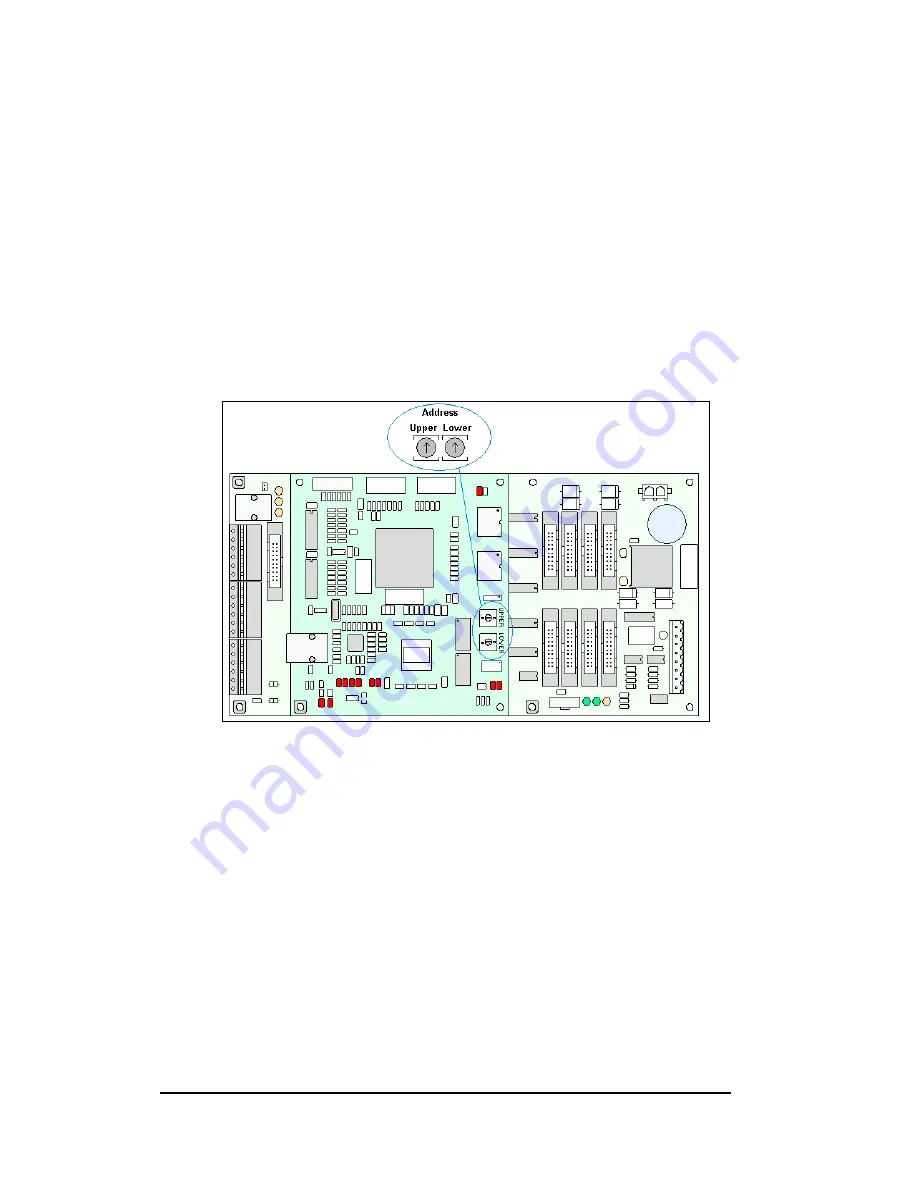
Refer to
Sections 4.2
for the summaries of how signal and power are routed
through the displays.
1.4 Component Identification
The following illustrations depict some of the more commonly accessed Galaxy
®
display components.
This is only a brief overview. Refer to
Section 4
for additional information on
maintaining the various display components.
Controller:
The display’s controller is the “brains” of the display (refer to
).
The controller receives, translates, and activates the signal information from the
computer to the appropriate pixels on the display.
Figure 2: Version 3 Controller
Display Address:
The display address is an identification number assigned to each
display of a network. Rotating the address switches on the controller sets the display
address. The control software uses the address to locate and communicate with each
display. Displays that are on the same network cannot have the same address.
Driver/Pixel Board:
For the 20 mm pixel boards, the LEDs are mounted directly
onto the driver/pixel board. In the case of the 12 mm boards, there is a separate LED
board and a separate driver that attaches to it. The driver board, whether separate or
built-in, is responsible for the switching and intensity levels of the LEDs.
Galaxy
®
:
Daktronics trademarked name for LED monochrome, tri-colored, or RGB
matrix displays.
LED (light emitting diode):
This is a low energy, high intensity lighting unit.
1-4
Introduction










































